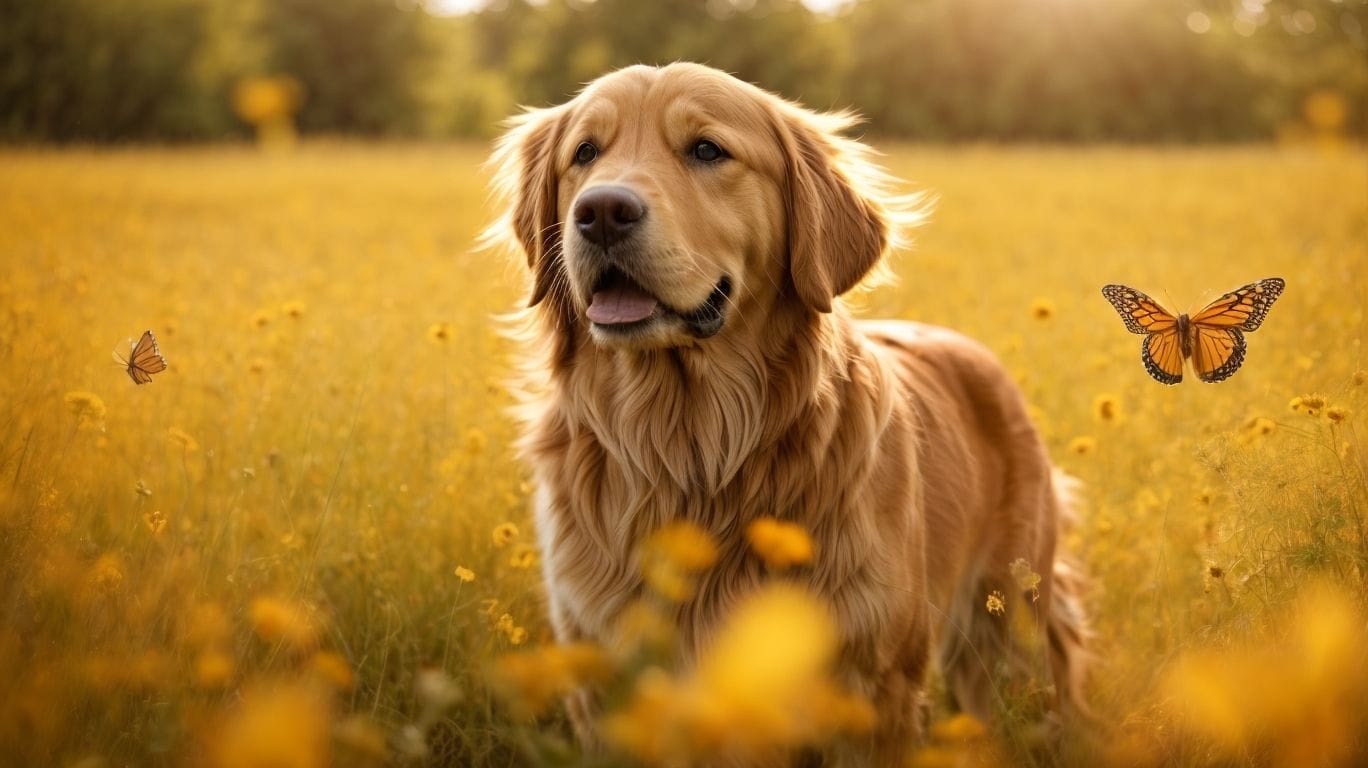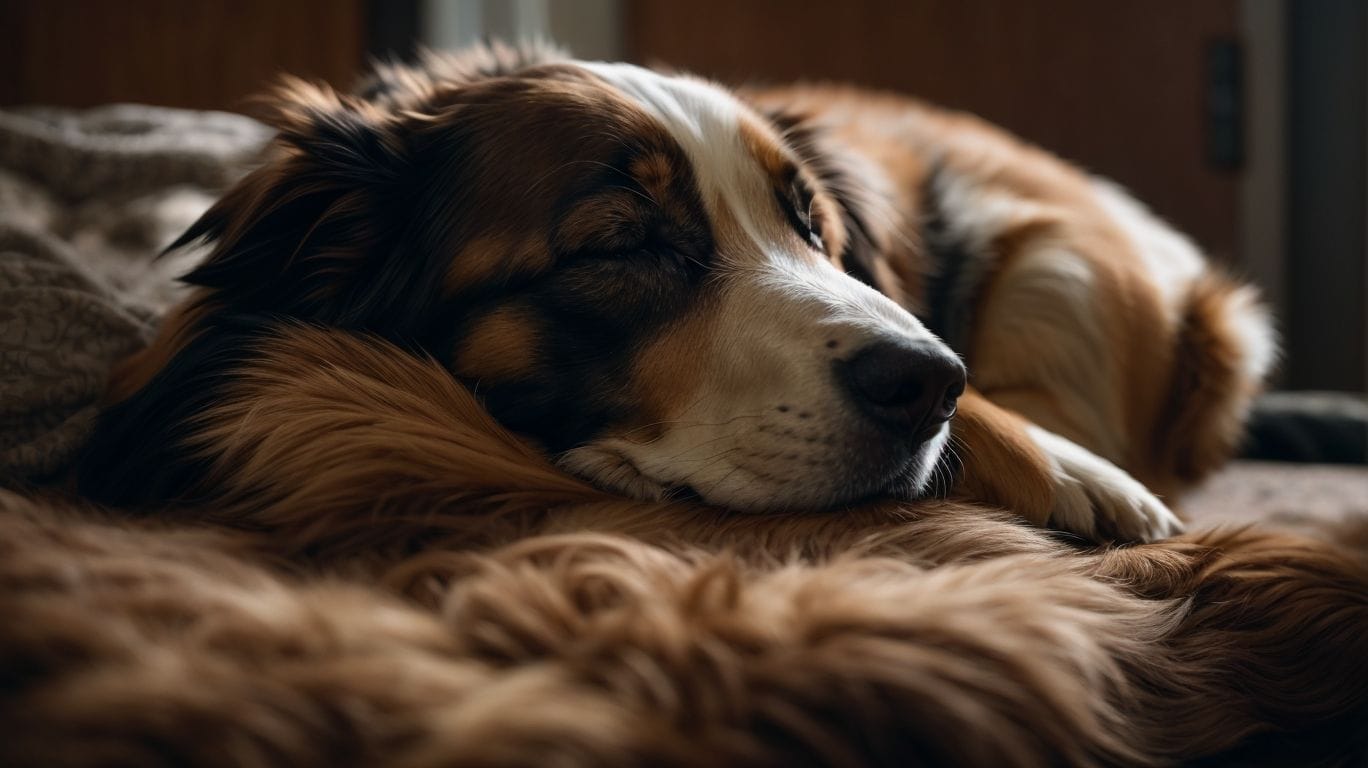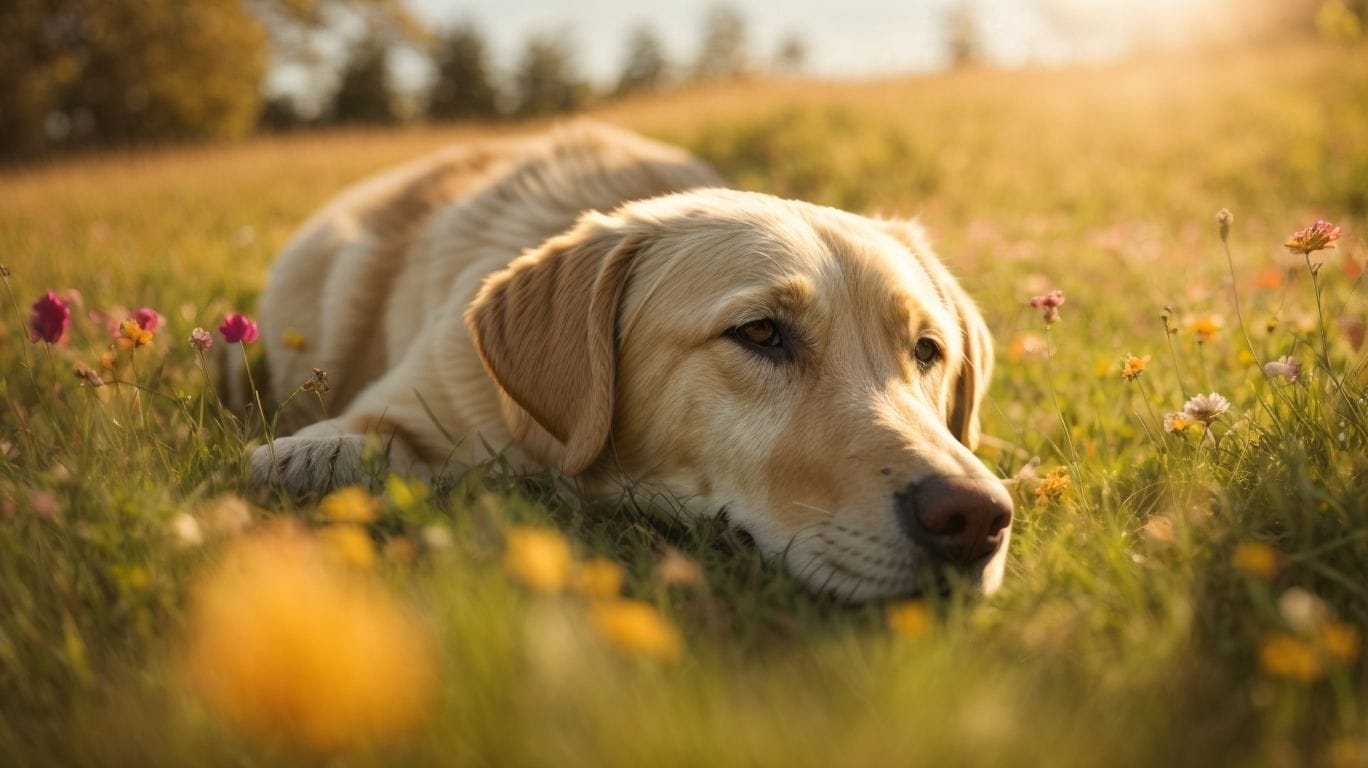Do Dogs Dream? This is a question that has intrigued dog owners and researchers alike. Many dog owners have observed their furry companions twitching, pawing, and making noises while they sleep, leading to the speculation that dogs may indeed dream. But is this really the case? Let’s dive into the fascinating world of canine sleep and dreams to find out the truth.
Understanding the Similarities Between Dog and Human Sleep is crucial to understanding the possibility of dogs dreaming. Research has shown that dogs have similar sleep patterns to humans, including both rapid eye movement (REM) sleep and non-rapid eye movement (NREM) sleep. REM sleep is the stage of sleep where dreaming most commonly occurs in humans, and it is characterized by rapid eye movements, increased brain activity, and muscle paralysis to prevent acting out dreams. Dogs experience this stage of sleep as well, suggesting that they may indeed have dream-like experiences.
Research on Canine Dreams has provided compelling evidence supporting the idea that dogs do dream. Studies conducted on dogs have shown that they exhibit brainwave patterns similar to those of humans during REM sleep when they are dreaming. This research suggests that dogs are likely experiencing dream-like mental processes during REM sleep, just like humans.
Signs That Indicate Dogs Are Dreaming are observable during their sleep. One indication is the presence of rapid eye movement (REM) sleep, which can be seen by observing their closed eyes moving rapidly. Dogs may exhibit paw movements and vocalizations, such as barking, growling, or whimpering, which suggest that they are actively engaged in a dream.
But what Do Dogs Dream About? While we cannot ask them directly, researchers speculate that dogs may dream about various things. One possibility is that they may be recalling their recent experiences, replaying events that occurred throughout their day. Another possibility is that dogs may be reenacting behaviors and actions that are a part of their daily routine. Lastly, dogs may use their dreaming time to process and consolidate memories, helping them to learn and retain information.
The Importance of Dreaming for Dogs is an intriguing aspect. Just like humans, dogs may benefit from dreaming. It is believed that dreaming plays a vital role in promoting cognitive functioning, including memory consolidation and learning. Dreams may also contribute to enhancing emotional well-being in dogs, helping them process emotional experiences and regulate their emotions.
Do All Dogs Dream? While it is widely believed that dogs do dream, it is important to note that individual variations may exist. Just like humans, some dogs may have more vivid and frequent dreams, while others may have less pronounced dreaming experiences. Factors such as breed, age, and overall health can potentially influence the intensity and frequency of a dog’s dreams.
Key takeaways:
- Dogs dream like humans: Similarities between dog and human sleep patterns suggest that dogs experience dreams just like humans do, with periods of REM sleep where their brain activity indicates dreaming.
- Signs of canine dreams: Observing a dog’s rapid eye movement, sleep, paw movements, and vocalizations can indicate that they are dreaming. These signs resemble similar behaviors seen in humans during dream states.
- Dreaming benefits for dogs: Dreaming not only promotes cognitive functioning in dogs but also enhances their emotional well-being. It allows them to process and consolidate memories, reenact behaviors, and potentially learn from past experiences.
Do Dogs Dream?

Photo Credits: Petnarnia.Com by Charles Sanchez
Curious about the sleeping habits of our furry friends? Let’s dive into the fascinating topic of whether dogs dream. From exploring the similarities between dog and human sleep to uncovering intriguing research on canine dreams, we’ll uncover the secrets behind what goes on in a dog’s mind during those precious moments of slumber. Get ready to discover the enchanting world of canine sleep and unlock the mysteries of their dreams.
Understanding the Similarities Between Dog and Human Sleep
Understanding the similarities between dog and human sleep can offer valuable insights into the behavior and dreams of our four-legged companions. Dogs share sleep stages that closely resemble those of humans, encompassing both non-rapid eye movement (NREM) and rapid eye movement (REM) sleep. While in REM sleep, dogs display brain activity akin to humans and partake in vivid dreams. Just like humans, dogs may exhibit signs of dreaming, such as twitching paws or vocalizing. Research indicates that dogs may even dream about recent experiences, reenact behaviors, and process memories during their slumber. Grasping these parallels can nurture a stronger bond between dogs and their owners, ultimately contributing to their overall well-being. So go ahead and have a great time delving into your canine companion’s dreams!
Research on Canine Dreams
Research on Canine Dreams has offered valuable insights into the sleeping patterns and behaviors of dogs. Various studies have demonstrated that dogs share similar sleep patterns with humans, including experiencing rapid eye movement (REM) sleep, which is closely associated with dreaming. By closely observing dogs, scientists have recognized certain signs that indicate dogs are dreaming, such as movements of their paws and vocalizations while asleep. These findings strongly suggest that dogs are capable of dreaming about their recent experiences, exhibiting behaviors and actions they performed, and even processing and consolidating memories. Gaining a better comprehension of Canine Dreams can greatly contribute to enhancing dogs’ cognitive functioning and emotional well-being.
Signs That Indicate Dogs Are Dreaming

Photo Credits: Petnarnia.Com by Ethan Jones
Have they ever wondered if dogs dream? Well, in this section, we’ll uncover the signs that indicate dogs are dreaming. From observing their rapid eye movement during sleep to noticing their paw movements and vocalizations, we’ll explore the fascinating world of canine dreams. So, get ready to dive into the intriguing behavior of our four-legged friends and discover the hints that suggest they embark on whimsical adventures in their sleep.
Observing Rapid Eye Movement Sleep
Observing rapid eye movement sleep in dogs is a key indicator that they are dreaming. During this stage of sleep, dogs’ eyes move rapidly beneath their closed eyelids. It is similar to the REM sleep experienced by humans and is associated with dreaming. Along with eye movement, dogs may also exhibit movements of their paws and make vocalizations while dreaming. These signs suggest that dogs are actively processing information and experiencing vivid dreams. By observing these behaviors, owners can gain insights into their dog’s cognitive function, emotional well-being, and the memories they may be processing during their dreams.
Noticing Paw Movements and Vocalizations
Noticing Paw Movements and Vocalizations is a crucial factor in identifying when dogs are dreaming. To observe these signs, follow these steps:
- Pay attention to your dog’s body movements during sleep.
- Observe if your dog’s Paw Movements twitch or move in a running motion.
- Listen for any vocalizations such as barking, whining, or whimpering.
- Note if your dog’s eyes are rapidly moving under their closed eyelids.
- Keep in mind that the intensity and frequency of these movements and vocalizations can vary for each dog.
What Do Dogs Dream About?

Photo Credits: Petnarnia.Com by Eugene Nelson
Have you ever wondered what goes on in a dog’s mind during slumber? In this intriguing section, we explore the fascinating world of a dog’s dreams. From recalling recent experiences to reenacting behaviors and actions and even processing and consolidating memories, we’ll peel back the layers to uncover the mysteries of what dogs truly dream about. Prepare to be astonished by the inner workings of our furry friends’ subconscious minds!
Recalling Their Recent Experiences
Dogs, just like humans, have the charming ability to recall their recent experiences in their dreams. It is during the REM sleep phase, which is associated with dreaming, that dogs can relive past events and interactions. This includes playing, exploring, and even encountering other animals or people. Fascinating research suggests that dogs use their dreams to process and consolidate memories, which helps them learn and adapt to their environment. So, if you have ever noticed your dog twitching or making movement sounds while sleeping, they are likely recalling their recent experiences in their dreams. It truly is captivating to think about the rich dream world that dogs possess, mirroring their waking lives.
Reenacting Behaviors and Actions
When dogs dream, they have the unique ability to reenact behaviors and actions that they have experienced while they are awake. This fascinating phenomenon provides insight into their subconscious minds. Understanding the process of dogs’ reenacting behaviors and actions involves the following steps:
- During REM sleep, dogs may naturally twitch, paddle their paws, or even bark as they act out their dreams.
- These movements are believed to serve as a way for dogs to practice and reinforce their motor skills and instinctual behaviors.
- For instance, a dog may mimic chasing after prey or playing with other dogs by running in their sleep.
- Through this reenactment of behaviors and actions, dogs strengthen their neural pathways and fine-tune their physical abilities.
Fun Fact: Reenacting behaviors and actions during dreams are not exclusive to dogs; humans also go through this phenomenon, highlighting the similarities between our two species when it comes to sleep and dreams.
Processing and Consolidating Memories
Dogs engage in processing and consolidating memories during their dreams. Just like humans, dogs have a sleep stage called REM (Rapid Eye Movement), where their brain activity resembles that of wakefulness. During REM sleep, dogs may exhibit behaviors indicating they are reliving experiences and memories related to processing and consolidating memories. This includes movements, vocalizations, and even twitching paws. It is believed that these dreams play a role in memory formation and emotional processing for dogs. So, the next time you see your dog having a restless sleep, they might be busy processing and consolidating their memories related to processing and consolidating memories. To support this important brain activity, ensure your dog gets enough rest and uninterrupted sleep time.
The Importance of Dreaming for Dogs

Photo Credits: Petnarnia.Com by Christopher Ramirez
Unlocking the mysteries of our furry friends’ minds, we dive into the importance of dreaming for dogs. Discover how dreaming plays a crucial role in their cognitive functioning and emotional well-being. From enhancing problem-solving skills to processing emotions, we’ll explore the fascinating ways in which dreams benefit our canine companions. Get ready to be amazed by the inner world of dog dreaming and the impact it has on their overall health and happiness.
Promoting Cognitive Functioning
Dreaming plays a crucial role in promoting cognitive functioning in dogs. By allowing dogs to experience vivid dreams during REM sleep, this natural process aids in processing and consolidating memories, thereby improving their learning and problem-solving abilities. Additionally, dreaming enhances dogs’ emotional well-being by providing them with the opportunity to release stress and effectively regulate their emotions. While it is true that not all dogs dream in the same way, most breeds do exhibit signs of dreaming. To effectively support your dog’s cognitive functioning, it is important to provide them with a comfortable sleep environment, ensure regular exercise, and engage them in mental stimulation throughout the day. These practices will undoubtedly contribute to their overall cognitive health and well-being.
Enhancing Emotional Well-being
Enhancing emotional well-being is one of the benefits of dreaming for dogs. While sleeping, dogs have the opportunity to process emotions and experiences naturally, allowing them to regulate their mood and overall mental state. Dreams offer an outlet for dogs to release any pent-up stress or anxiety, resulting in a more balanced emotional well-being. To foster emotional well-being in dogs, it is recommended to provide a comfortable and secure sleeping environment, such as a cozy bed or designated sleeping area. This contributes to a peaceful and refreshing sleep experience, ultimately enhancing their emotional well-being.
Do All Dogs Dream?

Photo Credits: Petnarnia.Com by Philip Miller
Yes, all dogs dream. Do All Dogs Dream? During sleep, dogs go through different stages, including REM (rapid eye movement) sleep, which is when dreaming occurs. Studies have shown that dogs exhibit brain activity similar to that of humans during REM sleep when they dream. Research suggests that dogs may dream about familiar activities or experiences from their daily lives. You may notice your dog twitching, whimpering, or moving its paws during sleep, which are signs that it is dreaming. So, rest assured, your furry friend is likely having some interesting dreams while they sleep!
Some Facts About “Do Dogs Dream?”:
- ✅ Dogs dream similarly to humans and replay moments from their day while they sleep. (Source: AKC)
- ✅ Dogs often bark or twitch their legs during REM sleep, indicating that they are likely dreaming. (Source: AKC)
- ✅ Small dogs tend to dream more often than large dogs, with a new dream every ten minutes for small breeds. (Source: AKC)
- ✅ Puppies and senior dogs dream more often than middle-aged dogs. (Source: AKC)
- ✅ Dogs dream about “doggy things,” and their dream patterns are similar to humans. (Source: AKC)


